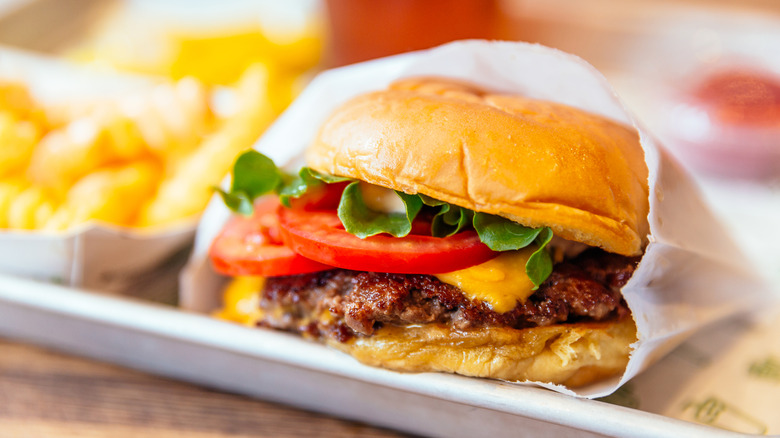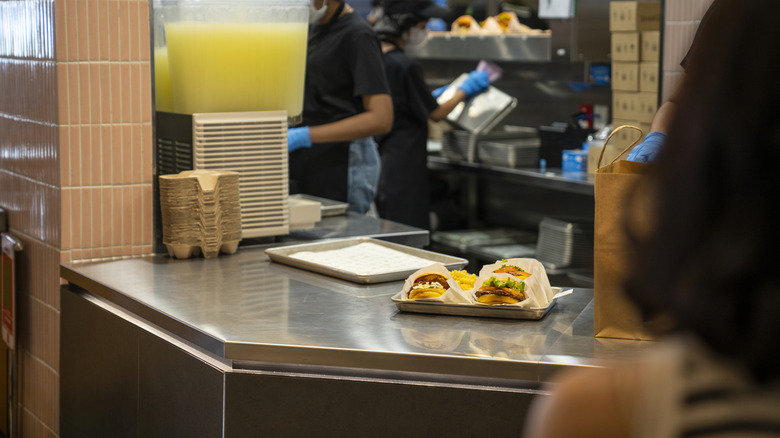This Is How Fast Food Chains Make Your Order So Suspiciously Fast
Ever wonder how fast food chains make food so fast? You pull up, order a burger, and your food's ready before you've even scrolled halfway through your feed. It's not just luck or microwave magic when it comes to turnaround time at fast food restaurants. Actually, behind the scenes, there's an entire system built for speed, and it goes way beyond the kitchen. The efficiency behind fast food preparation traces back to the 1940s in California. Car culture was booming and drive-in restaurants were all the rage, but even drive-ins weren't fast like they are today. Food still came out slowly, and it wasn't always hot.
That all changed when Richard and Maurice McDonald reimagined their barbecue spot into somewhat of a factory. Their Speedee Service System broke down fast food preparation into small, repetitive tasks. This assembly line model continues to thrive. In most fast food restaurants today, you'll find different workers flipping burgers, adding condiments, or frying potatoes repetitively. This division of labor rejects slow prep in favor of speed. Additionally, much of the food served at fast food chains is actually pre-cooked and frozen at central factories, then shipped to individual restaurants in bulk. This explains why flavor is consistent across different branches of the same restaurant chain — except for fast food soda, which always tastes different. Staff simply reheat and assemble your order according to the standard process (and perhaps your customization requests).
There's a price to pay for fast food
While fast food chains serve food in record time, this speed comes at a cost. Because efficiency is prioritized, ingredients are also heavily processed to stay shelf-stable and ready for rapid assembly. But this convenience can sometimes come at the expense of freshness and nutrition, as artificial additives, preservatives, and flavors are often used to extend the life of ingredients or improve their taste. Most meals and snacks are high in fat, salt, and sugar. For example, a large Big Mac meal at McDonald's consists of a burger, fries, and a soda. This can clock in at over 1,000 calories, with the burger alone being 580 calories.
Altogether, the whole process from freezer, to fryer, to front counter, and finally into your mouth is perfectly streamlined. A single grill can cook dozens of burgers at once, while dressing stations make sure each burger gets the same condiments, every time. That's why chains today try to follow strict safety procedures, and health inspections are necessary. And while most items at a fast food restaurant are not the healthiest choice, some options are certainly worse than others. Nonetheless, many people love fast food for its affordability and consistency. It's a reliable way to get a quick meal, and the larger portions indeed make you feel full. But the system's speed treats food like a factory product. While it's impressive that you can receive your meal order in just three minutes, now you know exactly why.

